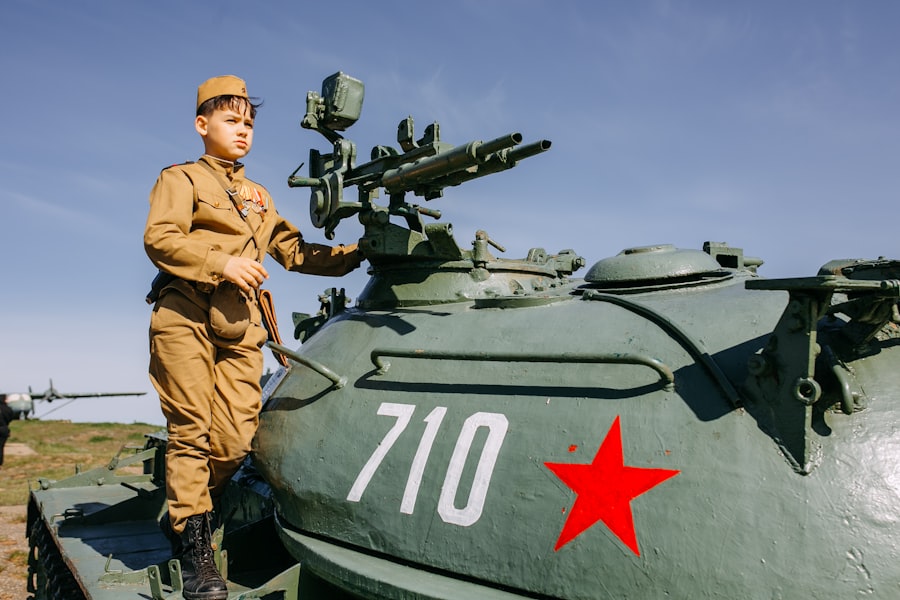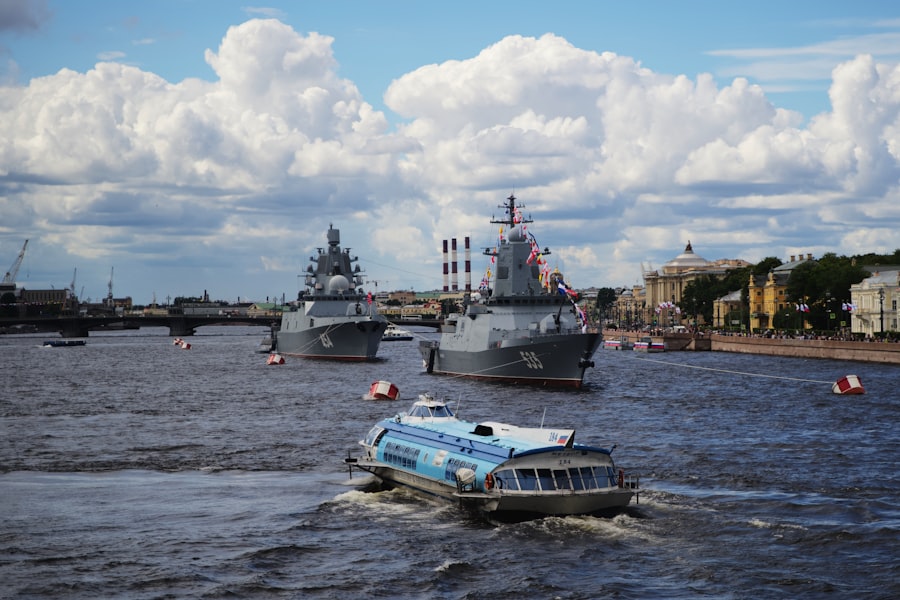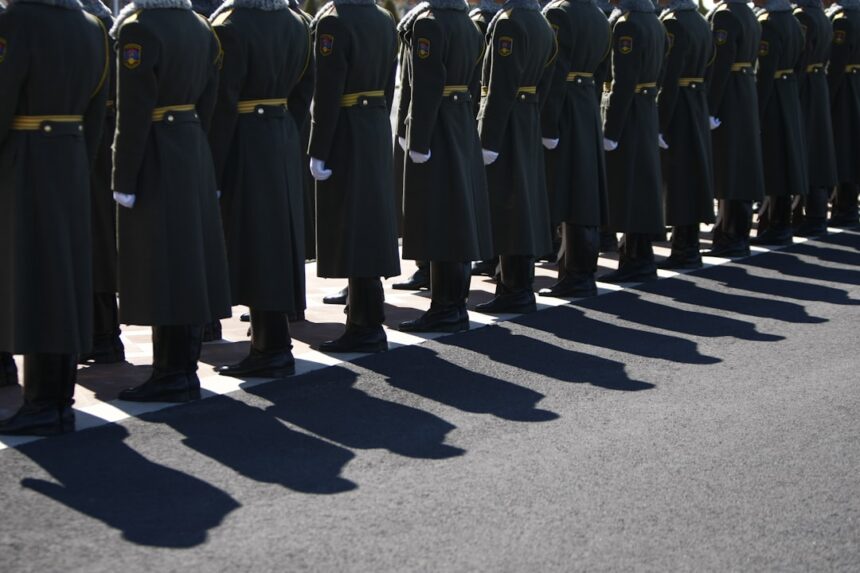In recent years, the Russian military has undergone significant reforms aimed at modernizing its forces and enhancing its operational capabilities. These reforms have been driven by a combination of geopolitical pressures, the need for improved defense readiness, and the desire to project power on the global stage. The Russian government has recognized that in an increasingly complex security environment, a robust and adaptable military is essential for safeguarding national interests.
As such, the reforms have sought to address various aspects of military organization, training, equipment, and strategic doctrine. The introduction of these reforms marks a pivotal moment in Russia’s military history. They reflect a broader understanding of the changing nature of warfare, where technological advancements and hybrid threats have become prominent.
The Russian leadership has emphasized the importance of creating a military that is not only capable of conventional warfare but also adept at countering asymmetric threats. This multifaceted approach to military reform aims to ensure that Russia remains a formidable player in global security dynamics.
Key Takeaways
- Russian military reforms have been a significant aspect of the country’s defense strategy.
- The historical background of Russian military reforms dates back to the Soviet era and has evolved over time.
- The goals and objectives of Russian military reforms include modernization, efficiency, and adaptability to new security challenges.
- Key initiatives and changes in Russian military reforms have focused on restructuring, procurement, and training.
- Challenges and obstacles faced in implementing Russian military reforms include corruption, mismanagement, and lack of technological advancements.
Historical Background of Russian Military Reforms
The roots of Russian military reforms can be traced back to the tumultuous period following the collapse of the Soviet Union in 1991. The disintegration of the Soviet military apparatus left Russia with a fragmented and underfunded defense structure. Throughout the 1990s, the Russian armed forces faced numerous challenges, including outdated equipment, low morale, and a lack of coherent strategic direction.
These issues were exacerbated by economic difficulties and political instability, which hindered any meaningful attempts at reform. In the early 2000s, under President Vladimir Putin’s leadership, there was a renewed focus on revitalizing the military. The 2008 war with Georgia served as a wake-up call, highlighting significant deficiencies in Russia’s military capabilities.
This conflict underscored the urgent need for comprehensive reforms to address issues such as command and control, logistics, and troop readiness. Consequently, the Russian government initiated a series of reform programs aimed at restructuring the military and enhancing its effectiveness in both conventional and unconventional warfare scenarios.
Goals and Objectives of Russian Military Reforms

The primary goals of Russian military reforms are centered around enhancing national security and ensuring that the armed forces are prepared to respond to contemporary threats. One of the key objectives is to create a more agile and responsive military structure capable of rapid deployment and effective engagement in various operational environments. This includes improving the readiness of troops and ensuring that they are equipped with modern weaponry and technology.
Another significant objective is to foster a culture of professionalism within the armed forces. The Russian leadership has recognized that a well-trained and motivated military personnel is crucial for operational success. As part of this effort, reforms have focused on improving training programs, enhancing educational opportunities for service members, and promoting merit-based advancement within the ranks.
By cultivating a professional military ethos, Russia aims to build a force that can effectively execute its strategic objectives.
Key Initiatives and Changes in Russian Military Reforms
| Initiative/Change | Description | Impact |
|---|---|---|
| Transition to professional military | Shifting from conscription-based to professional military service | Improved readiness and effectiveness |
| Modernization of equipment | Upgrading and replacing outdated military hardware | Enhanced capabilities and technological advantage |
| Strategic force reorganization | Restructuring of strategic forces and command systems | Improved command and control, and strategic deterrence |
| Increased focus on cyber warfare | Developing capabilities for cyber warfare and defense | Enhanced ability to conduct cyber operations |
Several key initiatives have been implemented as part of the broader military reform agenda in Russia. One notable change has been the reorganization of military districts and command structures to improve operational efficiency. The establishment of new joint command structures has facilitated better coordination among different branches of the armed forces, enabling more effective responses to emerging threats.
Additionally, significant investments have been made in modernizing equipment and technology. The Russian government has prioritized the development and procurement of advanced weapon systems, including precision-guided munitions, unmanned aerial vehicles (UAVs), and advanced missile defense systems. These technological advancements are intended to enhance Russia’s deterrence capabilities and ensure that its military remains competitive on the global stage.
Challenges and Obstacles Faced in Implementing Russian Military Reforms
Despite the ambitious goals set forth by Russian military reforms, several challenges have emerged during their implementation. One major obstacle has been resistance to change within the military establishment itself. Traditionalists within the armed forces may be reluctant to embrace new doctrines or operational concepts, leading to friction between reform-minded leaders and entrenched interests.
Moreover, budgetary constraints have posed significant challenges to sustaining reform efforts. While there has been an increase in defense spending in recent years, economic fluctuations and competing national priorities can impact funding for modernization initiatives. This financial uncertainty can hinder the procurement of new technologies and limit investments in training and infrastructure.
Impact of Russian Military Reforms on Defense Capabilities

The impact of Russian military reforms on defense capabilities has been notable, particularly in terms of operational readiness and strategic posture. The restructuring of command hierarchies has led to improved decision-making processes and more effective coordination among different branches of the armed forces. This has resulted in enhanced responsiveness during crises and conflicts.
Furthermore, the modernization of equipment has significantly upgraded Russia’s military capabilities. The introduction of advanced weapon systems has allowed for more precise strikes and greater operational flexibility. As a result, Russia’s military is better positioned to project power beyond its borders while simultaneously deterring potential adversaries.
Criticisms and Opposition to Russian Military Reforms
While many aspects of Russian military reforms have been praised for their ambition and scope, they have also faced criticism from various quarters. Some analysts argue that the reforms have not gone far enough in addressing systemic issues within the military, such as corruption and inefficiency. Critics contend that without tackling these underlying problems, any gains achieved through modernization efforts may be undermined.
Additionally, there are concerns about the potential militarization of Russian foreign policy as a result of these reforms. Some observers fear that an increasingly capable military could lead to more aggressive posturing on the international stage, raising tensions with neighboring countries and global powers alike. This perception has fueled debates about the implications of Russia’s military modernization for regional stability.
Corruption and Mismanagement in Russian Military Reforms
Corruption remains a pervasive issue within the Russian military establishment, posing significant challenges to effective reform implementation. Reports of mismanagement and embezzlement have surfaced, raising questions about how defense budgets are allocated and spent. Such corruption can divert resources away from critical modernization efforts and undermine public trust in the military.
Efforts to combat corruption within the armed forces have been met with mixed results. While some initiatives have been introduced to increase transparency and accountability, entrenched interests often resist change. This ongoing struggle against corruption complicates the broader reform agenda and highlights the need for comprehensive measures to address governance issues within the military.
Lack of Modernization and Technological Advancements in Russian Military Reforms
Despite significant investments in modernization, some critics argue that Russia’s military still lags behind its Western counterparts in certain technological areas. While advancements have been made in specific weapon systems, there are concerns about the overall pace of innovation within the defense sector. The reliance on legacy systems can hinder operational effectiveness and limit adaptability in rapidly evolving conflict scenarios.
Moreover, challenges related to research and development capabilities have emerged as potential roadblocks to achieving comprehensive modernization goals.
Addressing these gaps will be crucial for ensuring that Russia’s armed forces remain competitive in an increasingly technology-driven security landscape.
Consequences of the Failure of Russian Military Reforms
The failure to fully realize the objectives of military reforms could have far-reaching consequences for Russia’s national security posture. A lack of modernization may leave the armed forces ill-prepared to respond effectively to emerging threats or engage in complex operations abroad. This could undermine Russia’s ability to project power regionally or globally, diminishing its influence on international affairs.
Furthermore, failure to address internal issues such as corruption and inefficiency could erode public confidence in the military establishment. A demoralized force may struggle to maintain operational readiness or attract talented individuals into service roles. Ultimately, these consequences could jeopardize Russia’s long-term strategic interests and weaken its position on the global stage.
Future Prospects and Recommendations for Russian Military Reforms
Looking ahead, it is essential for Russian military reforms to adapt to an evolving security environment while addressing existing challenges. One recommendation is to prioritize transparency and accountability within defense spending to combat corruption effectively. Establishing independent oversight mechanisms could help ensure that resources are allocated efficiently toward modernization efforts.
Additionally, fostering collaboration between civilian industries and defense sectors could enhance innovation and technological advancements within the military. By leveraging expertise from various fields, Russia can develop cutting-edge solutions that meet contemporary security challenges. In conclusion, while Russian military reforms have made strides toward modernization and enhanced capabilities, ongoing challenges must be addressed for these efforts to be truly effective.
By focusing on transparency, accountability, and innovation, Russia can position itself as a formidable force capable of navigating an increasingly complex global security landscape.
In analyzing the reasons behind the failure of Russian military reforms, it is essential to consider various perspectives and insights from experts in the field. An article that provides a comprehensive overview of the challenges faced by the Russian military can be found on the website “In The War Room.” This article delves into the historical context, strategic missteps, and internal issues that have plagued the reform efforts. For a deeper understanding, you can read more about these challenges in the related article available at com/’>In The War Room
This resource offers valuable context and analysis that complement the discussion on why Russian military reforms have not achieved their intended outcomes.
WATCH NOW! 🎖️ Plot Twist: Russia’s Military Is Being Eaten Alive By Its Own Corruption
FAQs
What were the goals of the Russian military reforms?
The Russian military reforms aimed to modernize and streamline the armed forces, improve combat readiness, and enhance overall effectiveness.
What were the key factors that led to the failure of the Russian military reforms?
Some key factors that led to the failure of the Russian military reforms include bureaucratic resistance, lack of funding, corruption, and inefficiency in implementing the proposed changes.
How did the failure of the military reforms impact the Russian armed forces?
The failure of the military reforms resulted in continued reliance on outdated equipment and tactics, decreased combat readiness, and a lack of modernization in key areas of the armed forces.
What were some specific challenges faced during the implementation of the military reforms?
Specific challenges during the implementation of the military reforms included resistance from entrenched interests within the military, budget constraints, and the difficulty of overhauling a large and complex organization.
What are the potential implications of the failed military reforms for Russia’s national security?
The failed military reforms could potentially weaken Russia’s national security by leaving the armed forces ill-prepared to respond to modern threats and challenges, and by diminishing the country’s ability to project power and influence internationally.




